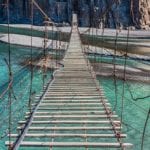 Miscellaneous
Miscellaneous  Miscellaneous
Miscellaneous  Gaming
Gaming 10 Funny Tutorials in Games
 History
History 10 Fascinating Little-Known Events in Mexican History
 Facts
Facts 10 Things You May Not Know about the Statue of Liberty
 Movies and TV
Movies and TV 10 Movie Adaptions That Brought Popular Songs to Life
 Health
Health 10 Miraculous Advances Toward Curing Incurable Diseases
 Miscellaneous
Miscellaneous 10 Undeniable Signs That People’s Views of Mushrooms Are Changing
 Animals
Animals 10 Strange Attempts to Smuggle Animals
 Travel
Travel 10 Natural Rock Formations That Will Make You Do a Double Take
 Movies and TV
Movies and TV 10 Actors Hidden in Your Favorite Movies
 Miscellaneous
Miscellaneous 10 Interesting Things Manufacturers Stopped Making and Why
 Gaming
Gaming 10 Funny Tutorials in Games
 History
History 10 Fascinating Little-Known Events in Mexican History
Who's Behind Listverse?

Jamie Frater
Head Editor
Jamie founded Listverse due to an insatiable desire to share fascinating, obscure, and bizarre facts. He has been a guest speaker on numerous national radio and television stations and is a five time published author.
More About Us Facts
Facts 10 Things You May Not Know about the Statue of Liberty
 Movies and TV
Movies and TV 10 Movie Adaptions That Brought Popular Songs to Life
 Health
Health 10 Miraculous Advances Toward Curing Incurable Diseases
 Miscellaneous
Miscellaneous 10 Undeniable Signs That People’s Views of Mushrooms Are Changing
 Animals
Animals 10 Strange Attempts to Smuggle Animals
 Travel
Travel 10 Natural Rock Formations That Will Make You Do a Double Take
 Movies and TV
Movies and TV 10 Actors Hidden in Your Favorite Movies
10 Islands You Would Not Want To Be Shipwrecked On
When the sea is a big, blue bowl with you in the middle of it, and you’re desperate for anything that might look like land, you might thank your lucky stars that you’ve sighted what looks like a mound of blessed earth rising out of the waves. Clinging to your sodden plank or limp and weak at the bottom of your lifeboat, you would cry salty tears of joy that you were saved.
But what if the beach you stumbled up onto was worse than anything you could have imagined? What if it promised not safety but only a different death? You might as well get back in that water; there is nothing here that will save you . . .
10 The Farallon Islands
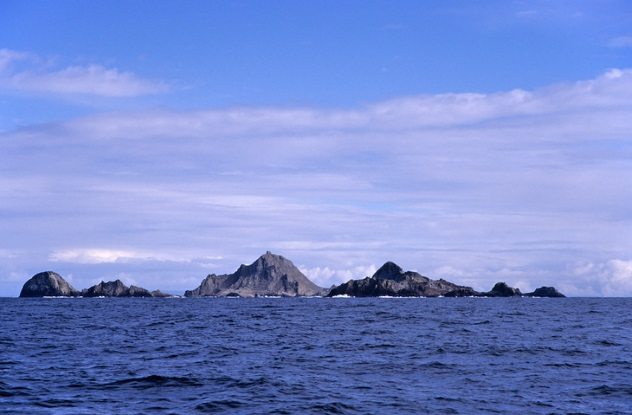
So you have shipwrecked off the coast of San Francisco. You can’t quite make it to the shore, but that’s fine because there are a group of islands and sea stacks not far away.
In the case of the Farallon Islands, also known as the Farrallones, you might actually be better off out of the water and on the land. The problem is that there are more than 47,800 drums of radioactive waste in the water, which were dumped there between 1946 and 1970.[1]
The bad news is that they’re hard to find and may be leaking into the Greater Farallones National Marine Sanctuary. The good news is that the land itself might be safe, and there are lots of fish to eat . . . which may or may not be radioactive.
9 Isla De Las Munecas
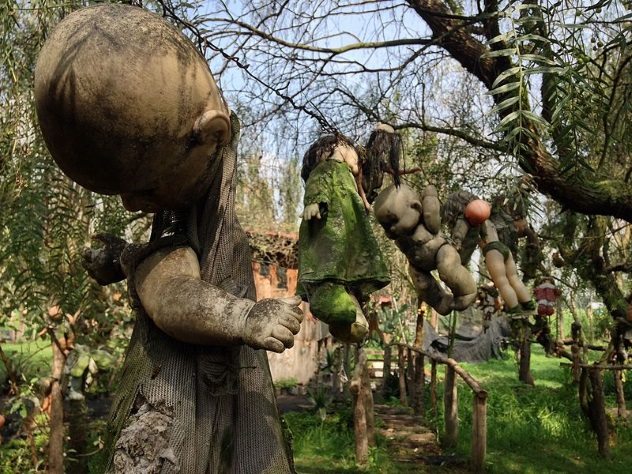
The chances of you being shipwrecked in the canals of Xochimilco, south of Mexico City, are slim, but anything can happen. Just look at politics.
Anyway, let’s assume that happens. Perhaps you are intoxicated and flail your way to a small island that seems to offer you at least a chance to breathe. You look up and realize that there are dolls everywhere—old dolls, dolls’ limbless torsos dripping from trees, dolls’ heads on sticks, empty eye sockets staring.
Why are the dolls there? Well, the sad story is that the caretaker of the island, Don Julian Santana Barrera, found a drowned little girl floating in the canal. He was unable to save her and was deeply upset.
To honor her, he hung a doll that he found floating nearby on a tree. He hung more and more dolls to appease the spirit of the girl, which he believed to be haunting him. Half a century later, Barrera was found drowned the same place that he found the girl.
You would probably be pretty safe staying on Isla de las Munecas—that is, presuming that the dolls don’t really whisper to you, watch you, and send you mad, as legend has it.[2]
8 Isola Della Gaiola
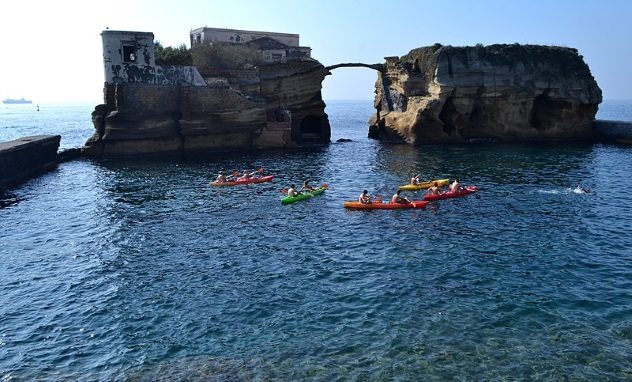
Being shipwrecked in the Gulf of Naples and somehow thrown by waves to the island of Gaiola would seem like a pretty sweet deal to start with. To begin with, you are only 30 meters (100 ft) from the coastline, and there is an abandoned villa to rest in.
The island is actually two islets with an interconnecting stone arch, high above the water. You might think it’s very Instagram-worthy and hate that you don’t have a phone. How nice to be so sheltered, you think. What you don’t know is that the island is cursed.
Since the 1920s, Gaiola’s owners have been dying like flies. Owner Hans Braun was murdered, and his body was wrapped in a rug. Then his wife drowned. Otto Grunback bought the villa and died of a heart attack soon after. Maurice-Yves Sandoz bought the villa and committed suicide. Baron Karl Paul Langheim went bankrupt. Gianni Agnelli, head of the Fiat company, lost his son to suicide and his nephew to cancer at 33. Paul Getty bought the island, and his grandson was kidnapped. Its last owner, Gianpasquale Grappone, was jailed soon after buying the island (although that one could have really been on him and not the island).[3]
So, do you think you are going to survive the island curse?
7 Bikini Atoll
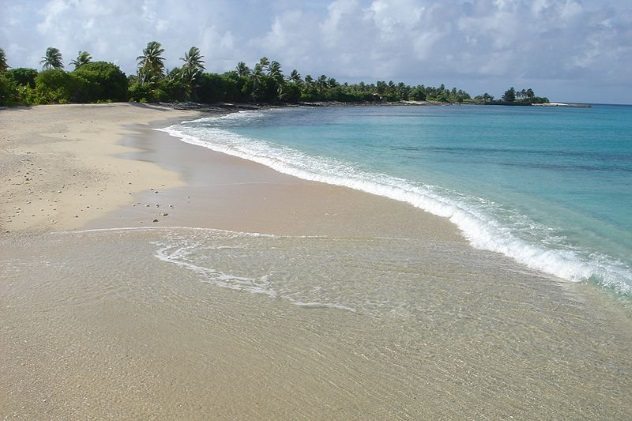
Bikini Atoll is stunning and idyllic with its white sands, palm trees, and blue water. If your boat capsized, and you washed up on Bikini Atoll, you might consider yourself lucky. And you would be, at least for a little while. As long as you didn’t want to eat anything that grows on the island . . .
The Marshall Islands, and Bikini Atoll in particular, were the site of nuclear testing by the US government from 1946 to 1958. The native Bikinians were moved, against their own choice, to nearby Kili Island. The US tested 23 nuclear weapons on Bikini Atoll, one of which, the Castle Bravo hydrogen bomb, was 1,000 times more powerful than the bomb dropped on Hiroshima in World War II.
So what if you wash up there now? Well, you could drink the water, live on the land, and safely eat the fish—but if you were to decide to supplement that diet with coconuts or breadfruit for an extended period of time, you would be filled with deadly radioactivity.[4]
6 Ilha Da Queimada Grande
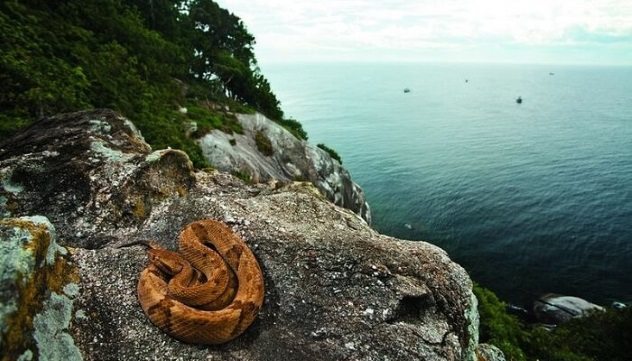
To many people, the worst place to be shipwrecked would be an island crawling with venomous snakes. Brazil’s Ilha da Queimada Grande lies off the coast and is home to up to 4,000 golden lancehead vipers, deadly little darlings who only live on this island and are actually endangered.
There used to be a lighthouse keeper on the island. According to local lore, the snakes came in through the windows and killed the entire family one night, driving them screaming through the jungle to be bitten to death on the beach. The Brazilian government closely regulates who can visit the island and dictates that all visits to the island must include the presence of a doctor.
If you wash up on Snake Island, maybe you should just go back out into the water.[5]
5 Plum Island
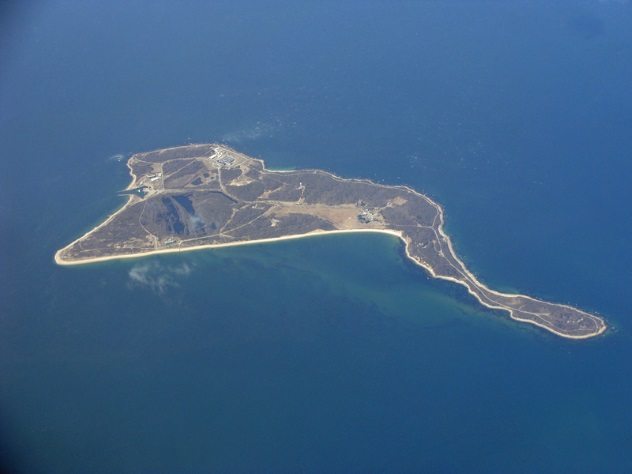
If you were unlucky enough to wash up on the shores of Plum Island, off the coast of Long Island, you might be forgiven for thinking you had stumbled into either the lair of Dr. Evil . . . or simply a boring research facility. It depends what sort of person you are. Either way, you would be partially right—the Plum Island Animal Disease Center, the US government’s research facility into animal disease, is located there.
The island has been the subject of various conspiracy theories. Maybe it’s because of the disease center, or maybe it has something to do with the weird carcasses that have washed up on shores near Plum Island, like that of the famed Montauk Monster, an unknown animal that washed up in July 2008. (Several experts have concluded that it was a raccoon.) Or maybe it’s just that government experiments are always assumed to be evil in nature.
Efforts have been made to sell Plum Island, though environmental groups have sued to block the sale.[6] Currently, the island is full of secrets, foot-and-mouth disease, and things that we don’t even know about. Wash up there, and maybe, just maybe, you’ll be bitten by a radioactive spider or two.
4 North Sentinel Island
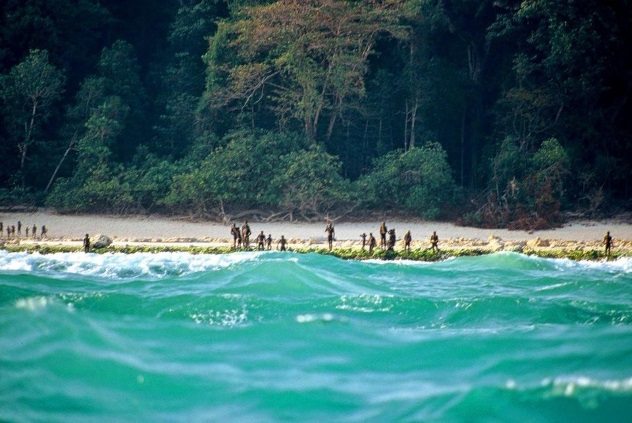
As you row your little lifeboat over the crystal blue waters of the Bay of Bengal, you spot a mangrove-encrusted island with white sands. Suddenly, you hear a voice, and as you look to see who is calling you, you die. Game over.
The Sentinelese people of North Sentinel Island are one of the last societies on Earth that have no contact with the outside world. Anyone who goes to their island is killed. They have no visitors and no contact with modern technology at all.
The Indian government has decided to leave them alone and has imposed a 4.8-kilometer (3 mi) limit around their island that no one is to cross. There is much concern that tourism development on nearby islands might spread disease to the islands and their inhabitants or might lead to more murders by the Sentinelese people, who are really probably better off where they are.[7]
3 Miyakejima
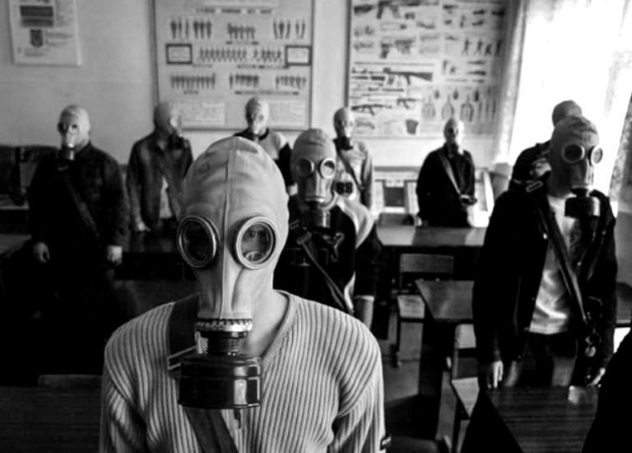
If you have the misfortune to be shipwrecked off the coast of the Japanese island of Miyakejima, you have better hope you have the good fortune of being shipwrecked with a gas mask.
The small town of Miyakejima sits below the volcano that is also called Miyakejima. The volcano is an active and spews forth clouds of sulfuric gasses daily. It is illegal not to have a gas mask with you at all times on Miyakejima. The residents put them on when the air quality becomes too toxic, and even with the gas masks, the air sometimes becomes so bad that the residents of the island have to be evacuated.
All visitors must bring a gas mask. Did you bring a gas mask on your lifeboat? Better hope someone has a spare one![8]
2 Gruinard Island
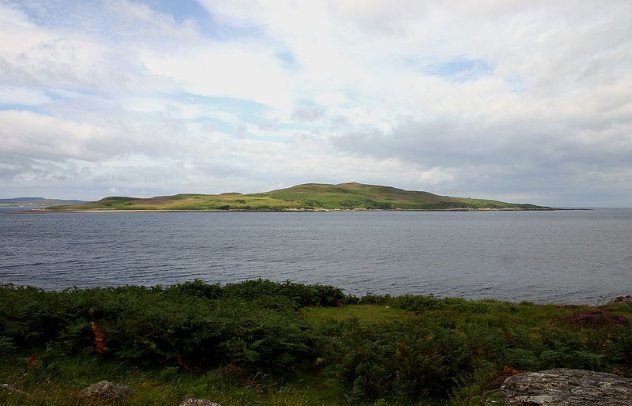
If you were to wash up on the shore of the relatively flat, treeless Scottish island of Gruinard, you might be about to die terribly. Or you might just get to spend some time with some friendly sheep.
Gruinard Island is a nondescript little patch of green inhabited by test sheep. The test sheep are there so that scientists can determine whether or not they fall prey to a particularly nasty type of anthrax. During World War II, the British government would bomb flocks of sheep on the island with dirty bombs filled with Vollum 14578, a virulent type of anthrax. They were testing the disease for wartime use.
In carrying out these tests, they thoroughly infected the island and had to abandon it. Signs were posted in an attempt to stop people from landing on the island. However, in the 1980s, a group called Operation Dark Harvest started sending contaminated soil from Gruinard to various government bodies in an attempt to get the island cleaned up.
The process of cleansing the island began in 1986, and the island was declared safe in 1990. There hasn’t been a case of anthrax in the island’s sheep since 2007. So far, so good—but there are probably better places to be shipwrecked in Scotland.[9]
1 Ramree Island
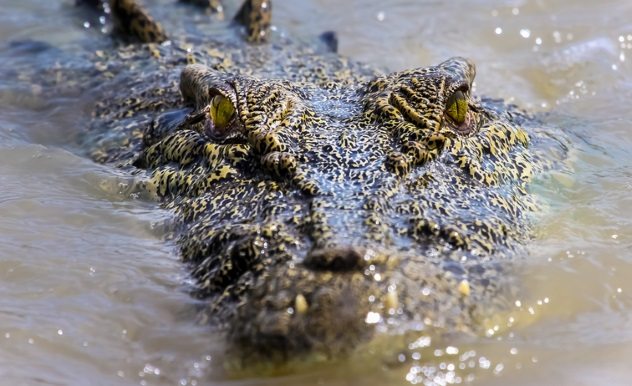
You need to step back in time. Your ship has been bombed in the Bay of Bengal, and you have to swim for the nearest land you can see. You make it. Your waterproof map that you hastily stuffed in your pocket tells you that you are on Ramree Island
Just swim for your life. Turn around. Get picked up by the enemy—just swim.
Ramree is a large island that sits off the coast of Burma. It is relatively tame now, but back in World War II, it was allegedly the stage for the largest massacre of humans by animals in recorded history. Japanese troops who were holding the island of Ramree in 1945 became engaged in fierce conflict with Allied troops, who were determined to take the island. Nearly 1,000 of the Japanese soldiers ran through the swampland to reach more of their cohort on the other side of the island.
The mosquito-bitten solders, hungry and thirsty, were eaten alive by giant saltwater crocodiles. As the Allied troops waited to capture surrendering Japanese soldiers, they were horrified at the sounds of the massacre. According to some reports, only 20 soldiers survived and were captured, terrified beyond belief at the carnage they had witnessed.[10]
So if you find yourself shipwrecked on Ramree Island in the 1940s, you really need to hop back in your time machine and get out of there.
Read about more terrifying islands on 10 Strange And Mysterious Islands and 10 Creepy Stories From Mysterious Islands.


